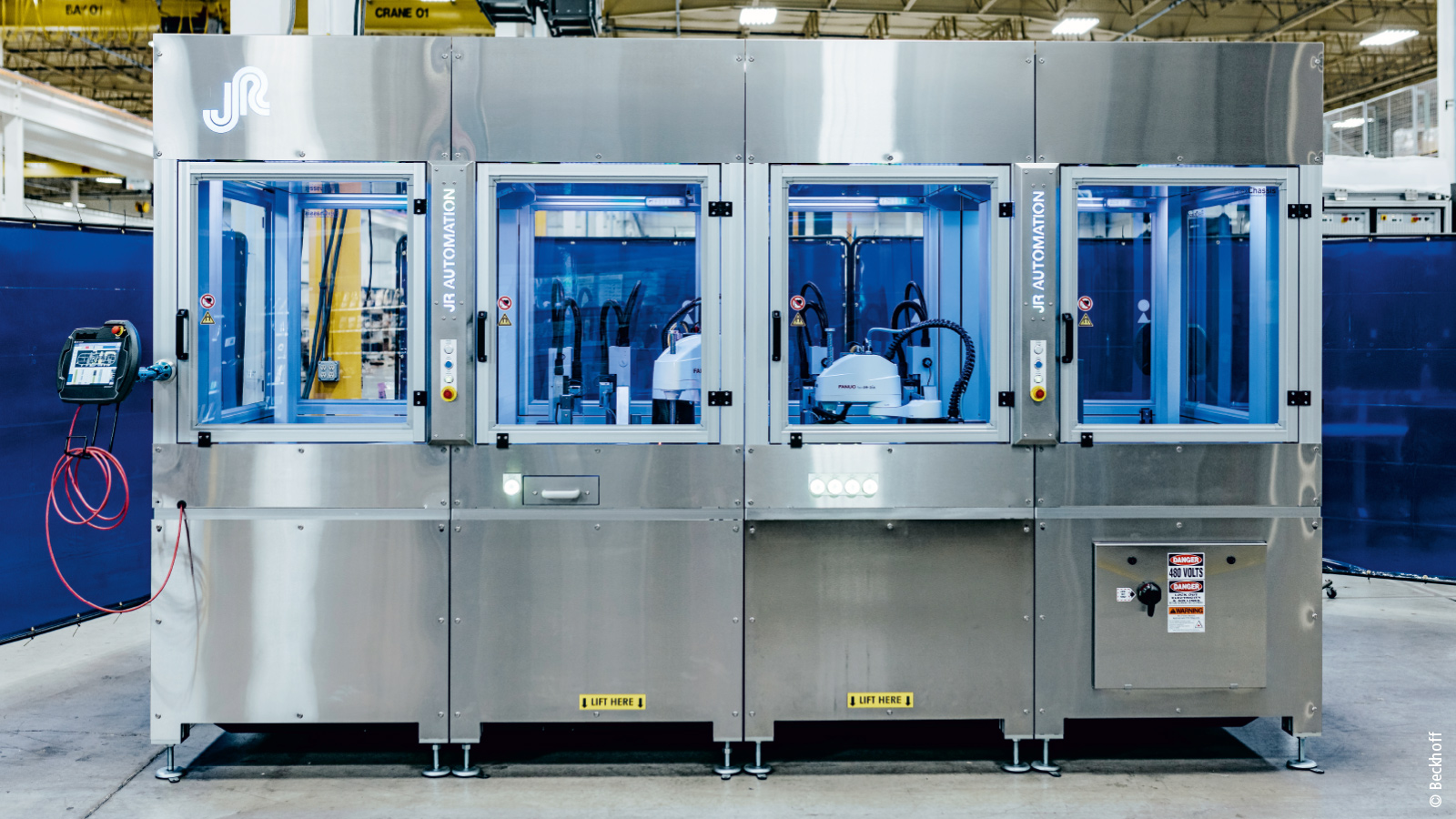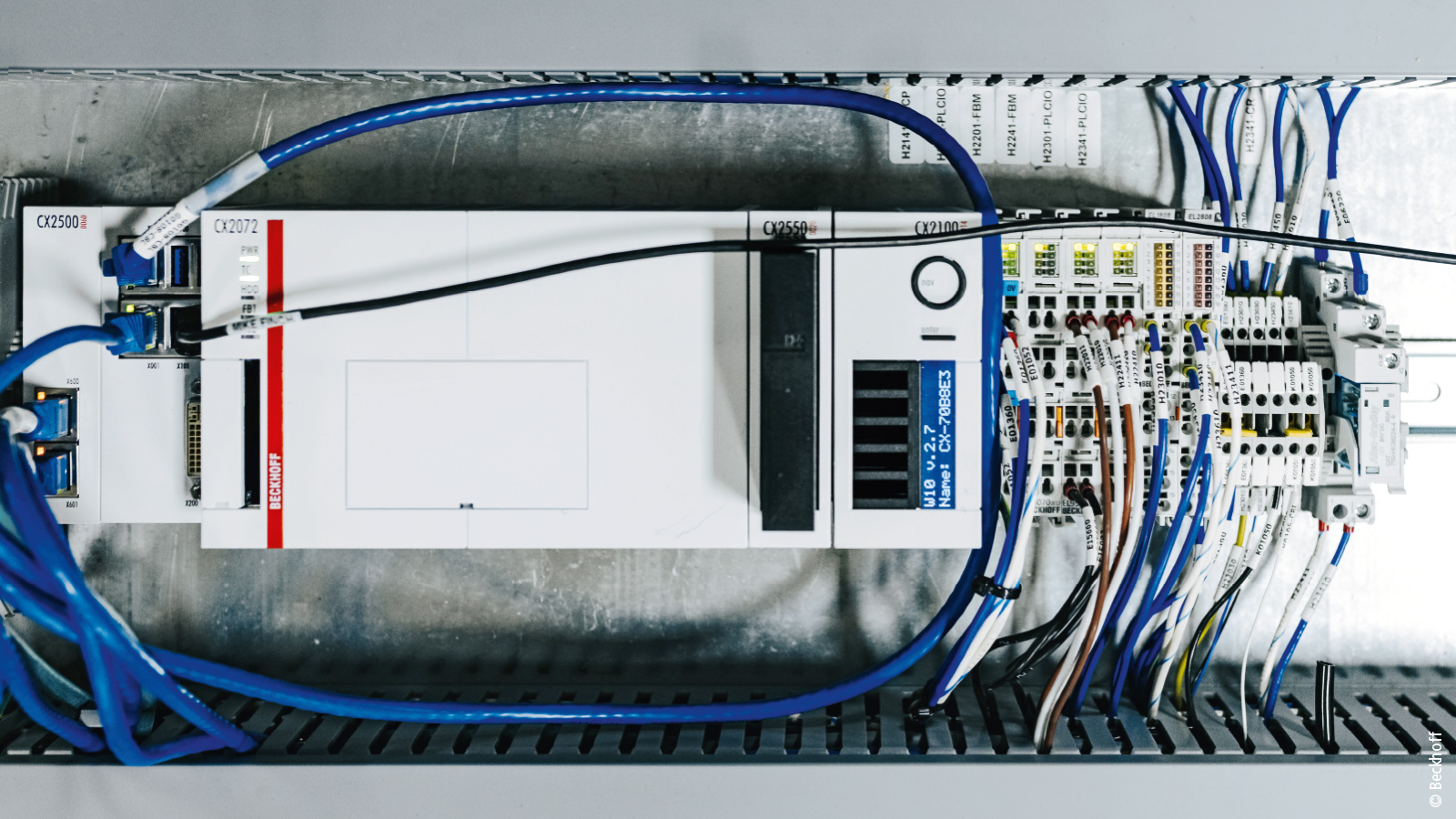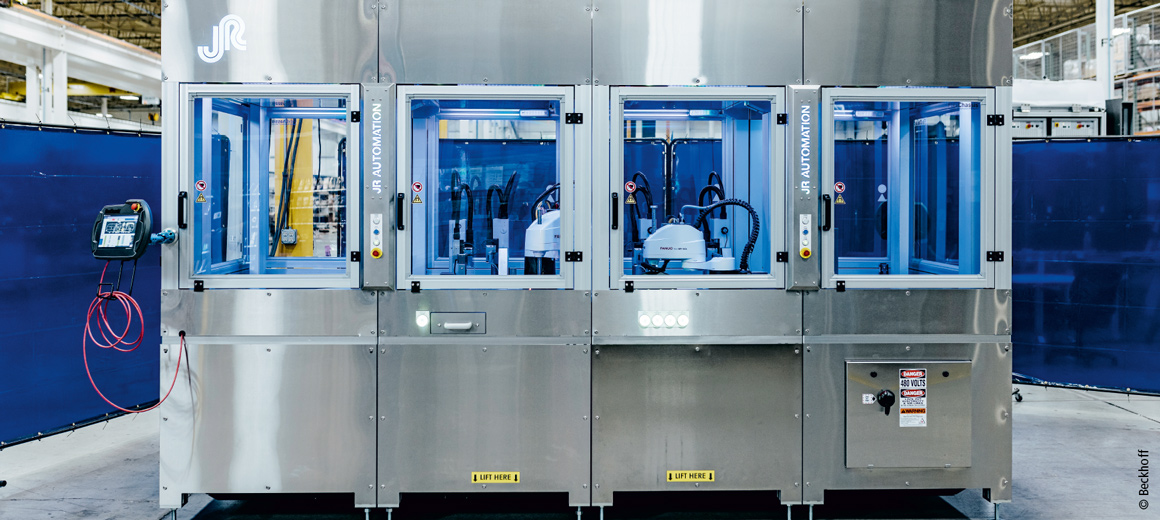

EtherCAT and XTS in modular assembly platform for clean manufacturing
Initially geared toward hygienic manufacturing in the life sciences market, the powerful FlexChassis® platform offers enormous potential for application in other industries. These include food and beverage, semiconductor, automotive, battery and e-mobility, e-commerce and more. Here, adaptive automation via the eXtended Transport System (XTS) from Beckhoff Automation is key, according to the experts at JR Automation.
JR Automation®, a Hitachi Group Company with headquarters in Holland, Michigan, knows how to flex. From small beginnings, the machine builder and systems integrator has successfully developed into a company with more than 2,000 employees by delivering custom automated solutions for numerous industries. “We want to be good stewards of automation. That means helping our customers figure out where they want to go and providing the best technology solutions to get them there,” says Shawn Smith, Director of Sales at JR Automation. “One way we’ve done this is through our scalable, modular automation platform, FlexChassis, which speeds up customers’ time to market while cutting costs.”
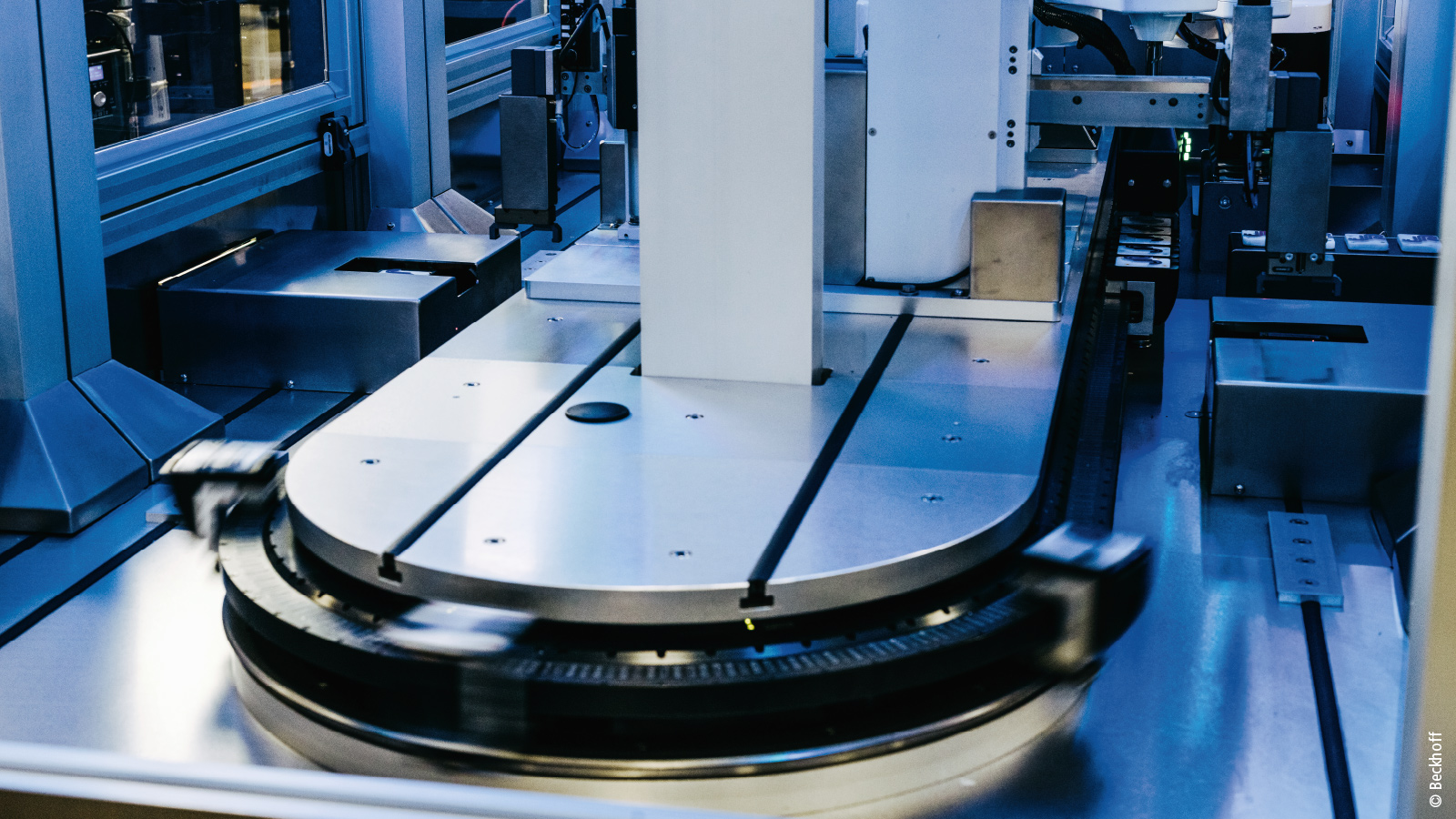
The last few years have been challenging for manufacturers. And as pressure mounted in critical projects, the JR Automation team noticed how frequently reengineering slowed projects. Having to redesign a machine’s base and material handling technologies often took the equipment end user’s attention away from optimizing their own processes and products.
The FlexChassis platform, on the other hand, empowers manufacturers to start small with a system for product testing or proof of concept work. Then they can rapidly scale for series production with built-in OEE (Overall Equipment Efficiency) monitoring and quality control functionality. Going forward, they have confidence in the ability to add capacity, customize processes or retool.
Modularity meets customer needs
With standard modules measuring 1 by 1.5 m wide and 2.44 m tall, FlexChassis supports wide-ranging robotics and other bolt-on equipment for different applications. However, the JR Automation engineers didn’t want inflexible material handling to be a stumbling block to modularity, so they looked to adaptive linear transport tech that can accommodate constant change. That’s when they turned to the intelligent transport system XTS because JR Automation is part of the Beckhoff Integrator Group (BIG) and no stranger to Beckhoff technologies. “JR chose the XTS due to its speed and modular design that allows for multiple configurations,” says Mick Trompen, Chief Engineer, Life Sciences at JR Automation.
XTS consists of linear motor modules with integrated power electronics and wireless, magnetically connected movers on mechanical guide rails, all with multiple geometries to create any path and track length imaginable as a perfect match for the modular assembly platform. The movers can operate individually or in groups and in this way enable individualization of the material flow, e.g. by using multiple executions of slower process stations and skipping of stations for rejected products. In addition, the software-based changeover saves time during format changes and minimizes the mechanical conversion effort. The overall result is an extremely flexible workflow and high system throughput.

“The XTS motor modules’ simple configuration and track layout worked well for our concept,” explains David Shiles, Senior Controls Engineer at JR Automation. “We are taking on assemblies with more steps and at higher throughput rates than ever before.” Space savings also appealed to the team. The XTS technology’s compact and integrated design eliminates outmoded mechanical components such as belts, chains, indexing tables, etc. This typically shrinks machine footprints by roughly 50%.
Powerful control and communication
While XTS enables flexible product handling, many technologies come together in the FlexChassis to make a highly scalable solution. JR Automation sees possible process stations including everything from ultrasonic welding, snap fit and adhesive application to reagent fill/seal, drug handling and applying labels or decorations. Such a broad selection of robots, end effectors, tooling and sensors requires rapid communication via various industrial protocols and fast cycle times. Real-time communication with EtherCAT delivered the necessary speed and flexibility, David Shiles explains: “I prefer EtherCAT from a performance standpoint.” EtherCAT’s openness was critical, too, for adaptation to customer environments. The Beckhoff components offer support for communication via more than 30 common protocols.
High-speed EtherCAT communication is necessary for XTS and to coordinate with robotics and other tooling at high speeds. Here, a CX2072 Embedded PC from Beckhoff offers sufficient computing power with many-core Intel® Xeon® processors. “This is the only way to meet the necessary scan time of 250 µs to process the XTS data in addition to dedicating cores for PLC, servo control and machine vision,” Shiles says.
To program the wide-ranging functionality, the engineers relied on TwinCAT 3 automation software. The end-to-end engineering and runtime platform supports a vast range of programming standards and also transparent communication between the Beckhoff IPC and third-party PLCs for future extensibility. The high portability of code in TwinCAT also offered advantages to iterate faster.
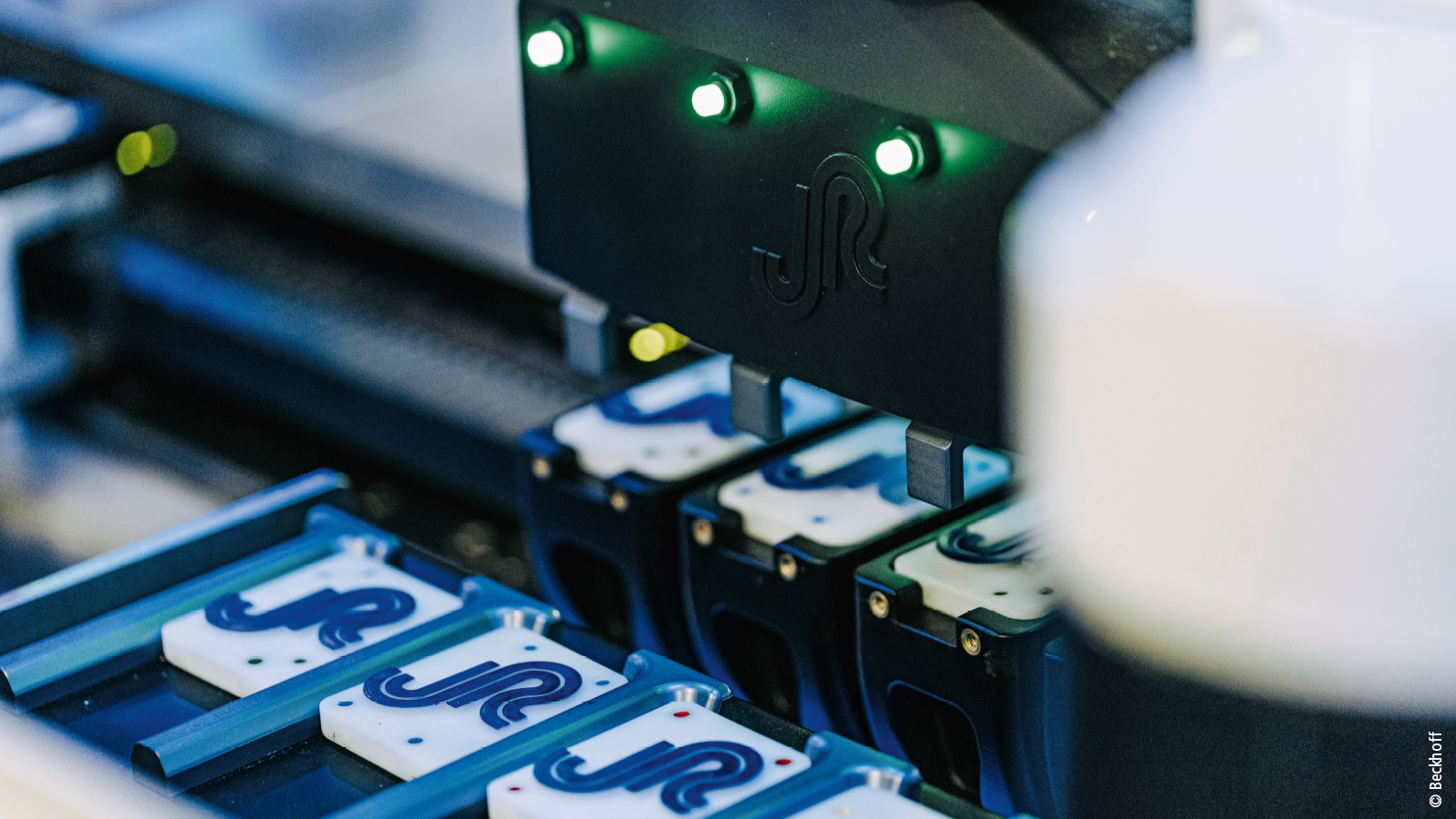
Dynamic automation platform delivers results
FlexChassis offers customers faster time to market, high throughputs greater than 45 parts per min and low footprint requirements. Its clean manufacturing capabilities include HEPA filtration (air filter), support for various cleanroom classes and a stainless steel construction for hygienic applications. PC-based control also supports intuitive dashboards giving users easy access to all system data. “IoT and track and trace are very important functions that are native to the FlexChassis system for downtime management, quality management and OEE,” explains David Vitale, Chief Engineer, Digital Solutions at JR Automation. “Performance data is gathered from the system utilizing a local Beckhoff embedded PC through our MES functions. Currently, these are stored on local databases, but they can be hosted in the cloud or elsewhere as desired.”
TwinCAT empowered JR Automation engineers to rapidly commission the first FlexChassis system, which served as a demo for customer meetings and trade shows. The XTS platform sped this development through an intuitive configurator for hassle-free setup, a suite of powerful diagnostic tools and visualization tools for enabling rapid development, whether in simulation or on real hardware. The no-cost TwinCAT engineering environment was another huge benefit, according to Applications Engineer Chris Moritz. “It’s amazing how Beckhoff handles TwinCAT licensing for development work,” he says. “I originally wrote the XTS software used for a project in 2020 when we had to work from home because of COVID. Because I could simulate substantial portions of the machine without needing to buy hardware or software, I hit the ground running once the components arrived with minimal debug time.”
“JR Automation and Beckhoff both started in 1980. We’ve been able to evolve together over the years and develop our technologies to be the tip of the spear for our customers,” Shawn Smith concludes. “It's rewarding to have a partner like Beckhoff. We're really excited about what’s next and how we will stretch the limits of automation together.”
